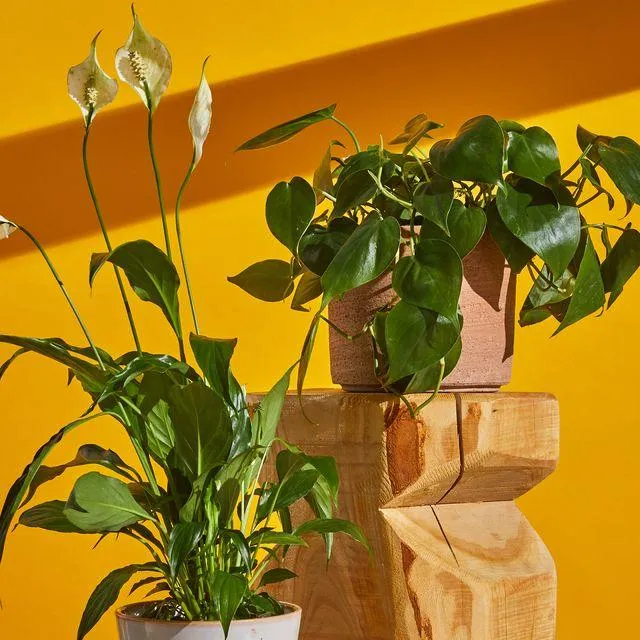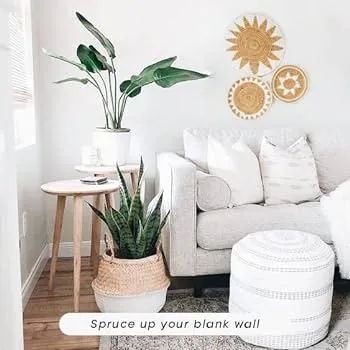How to Effectively Use Hanging Plants in Your Living Room
If you’re looking to bring more life and visual interest to your living room, hanging plants are a great option to consider. From my experience designing living spaces, incorporating the right hanging greenery can really lift a room and improve the indoor air quality. In this article, I’ll discuss the top user intentions for searching “hanging plants living room” and provide answers to all your questions.
Choosing the Right Hanging Plants
There are many beautiful hanging plant varieties to choose from, so the first step is selecting types that will thrive in your living room conditions. Here are some of the best choices:
- Pothos – One of the hardiest and lowest maintenance options. Its trailing vines look lovely hanging and filtering down. Great for low and medium light areas.
- Philodendron – Comes in many varieties with gorgeous foliage. Very tolerant of low light. The heartleaf philodendron is a gorgeous choice.
- Spider plant – Produces loads of babies on trailing stems, so it looks full. Very drought tolerant once established. Easy care.
- English ivy – Evergreen foliage vine that thrives in most any condition. Can trail very long, making a dramatic statement.
- Peperomia – Comes in compact forms perfect for hanging pots. Waxy leaves come in many colors and patterns. Low light tolerant.
I’d avoid plants like ferns and succulents that prefer higher light, unless you get a variety bred for low light or place the pot near a bright window. Experiment to see what thrives best in your space.
Container Options
The container is an important choice, as it holds the plant and affects the look. Here are some container tips:

- Terracotta or glazed ceramic pots work well and look natural. Avoid unglazed terracotta in very low light to prevent drying out.
- Rattan or woven baskets provide an airy, boho vibe. Make sure the material won’t decompose in high moisture.
- Macrame hangers are a fun DIY project and let you adjust height easily. Use outdoor cord for less fraying.
- Metal hangers or chains, especially rusty or antique styles, have vintage flair. Use hardware durable for outdoor conditions.
- For multiple plants, try a hanging shelf, grid, or plank suspended with chains or rope for an eye-catching display.
Drainage holes are essential. Match pot size to plant mature size to avoid overcrowding.
Hanging and Care Tips
Now for the hanging and care advice. Some key tips:
- Hang plants 6-8 feet above the floor or furniture for visual balance (unless using a tall hanging surface). Measure 1-2 inches below the ceiling for ceiling hangers.
- Use sturdy hooks or eye screws securely anchored into wall studs for weight-bearing pots. Toggle bolts work too for hollow walls.
- Consider ceiling beams, mantels, or windows as hanging points if they can support the weight.
- Water when the top 2 inches of soil is dry. Use humidity trays for very dry indoor air.
- Mist foliage as needed and wipe dust from leaves monthly with a damp cloth.
- Rotate pots occasionally to encourage even growth. Repot only when roots fill the container.
- Prune off any damaged or diseased foliage. Propagate by stem or leaf cuttings in water or soil.
With care and the right conditions, your hanging plants will thrive for years to come. Let me know if any other questions come up!
Styling and Plant Placement Tips
Finally, incorporating hanging plants effectively into your living space design. Here are some styling tips:

- Hang a single dramatic trailing plant as a centerpiece, like a Swiss cheese plant or spider plant.
- Create a living mobile with small pots of different trailing plants tied together artfully.
- Place trailing plants above couches, hanging shelves above coffee tables to soften structural lines.
- Incorporate various heights and planting depths for visual interest, like short pots mixed with long trailing varieties.
- Combine hanging planters with tabletop plants and floor plants for fullness and balance.
- Add ribbon, twine, or colorful yarn wrapped around ropes or chains connecting planters for pattern.
- Coordinate pot and hanger colors with your interior decor scheme for polished coherence.
With experimentation, you can find arrangements uniquely suited to your space. Hanging plants are kind of like that cool, alive artwork that everyone admires. I hope these tips help you create an oasis that’s enviable, right in your own living room!
Let me know if any other questions come up. Basically, hanging plants are a fun way to bring some nature indoors and sort of brighten things up. Sometimes the plants don’t always cooperate perfectly, but that’s part of the fun too, right? Hopefully this gives you a sense of how to pick plants and display them. Happy decorating!
Top Hanging Plants for the Living Room
| Plant | Light Needs | Watering | Height |
|---|---|---|---|
| Pothos | Low | Allow soil to dry out between waterings | Up to 6 feet |
| Philodendron | Low to Medium | Water when top inch of soil is dry | Up to 6 feet |
| Spider Plant | Medium | Let soil dry out between waterings | Up to 3 feet |
| English Ivy | Low to Medium | Water when top inch of soil is dry | Unlimited, vines can grow very long |
| Peperomia | Medium | Water when top inch of soil is dry | Up to 2 feet |
FAQ
-
Can I use hanging plants in a living room with low ceilings?
Yes, you sure can! While it’s best if you have higher ceilings, you can kinda fit hanging plants into a living room even if the ceiling is not tall. Go for smaller plants that don’t droop too much. Make sure the hanging pot is also on the smaller side.
-
What kinds of hanging plants work well in a living room?
Some of the best hanging plant choices for a living room are pothos, English ivy, philodendron, spider plants, and air plants. These plants basically don’t require much care and can tolerate lower lights. Snake plants and peace lilies also hang out quite nicely in living rooms.

-
Should I use hooks or hangers to hang plants?
Both hooks and hangers can work great for hanging plants in the living room. Perhaps hooks allow for a cleaner look, while hangers offer more versatility in angling the plant or adjusting the height. At the same time, just make certain to use heavy-duty hangers or hooks that can withstand the weight of a pot filled with soil and a plant. You wouldn’t want your plant crashing to the floor!
-
How do I decide where to place hanging plants?
When figuring out spots for hanging plants in the living room, put them wherever they can brighten things up a bit. Common places are above the sofa, in a corner, or dangling from the ceiling in the center of the room. You can also hang a trailing plant from a bookshelf for a stunning effect. However, check that the plant gets enough natural light in that position. Placement is key for the plant’s health as well as the room’s visual appeal.
-
Can plants hanging from the ceiling be a safety issue?
is a fair question. If the hook or hanger can’t withstand the weight over time, I suppose a falling plant could potentially hurt someone. Most modern ceiling hooks are pretty dang strong, so as long as you’re using quality hardware matching the plant size, it’s not too huge of a problem. Maybe don’t hang anything too hefty directly above where folks sit. But in general, hanging plants can add beauty without being a big risk.
-
What if I don’t care for plants very well?
Never fear! If you’re not the best plant parent, go for low-maintenance hanging plants in your living room. Spider plants, pothos and philodendrons are amazingly resilient. Just water them when the soil feels dry and they’ll basically keep on growing. Peace lilies and English ivy can also tolerate erratic care. As long as you don’t totally forget about them, these plants will sort of hang in there alive.

-
Is the humidity from hanging plants bad in a living room?
Hanging plants can certainly boost humidity levels in a living room. Whether this is good or bad depends. On one hand, a bit more humidity may feel nice and help protect furniture. On the other hand, excessive moisture could potentially cause issues over time in some situations. As long as you have average ventilation and not like 50 plants clustered together, the humidity bump from hanging a few shouldn’t be a problem.
So in summary – hanging plants can totally work very well in bedrooms! Go for low-maintenance beauties, use quality hardware, and position them for maximum light. With a little effort, hanging plants can really make your living space into something rather stunning! Let me know if you have any other questions.
